Downstream operations are realizing the value of using continuous improvement (CI) methods in Rail Logistics optimization projects to significantly improve operational performance and bottom-line results. The experiences from two recent refinery improvement projects show how applying Lean thinking and digitization tools can significantly increase rail transportation capacity for both outgoing products and incoming feedstock, as well as reduce accessorial costs. Increased rail capacity leads to growth opportunities and cost savings by capitalizing on better use of infrastructure, labor and third-party performance.
Petrochemical operations that use rail logistics for moving product out and feedstock in are realizing the value of smarter rail logistic operations, amplified in the new era of Precision Scheduled Railroading (PSR). Rail Logistics Optimization efforts have shown the downstream industry how to achieve benefits of increased throughput using existing resources, before resorting to spending capital, creativity before capital.
Rail operations are far from the core competencies of oil and gas refineries, so historically, opportunities to capitalize on the optimization of rail logistics are often missed. By placing dedicated attention on the optimization of rail logistics, refineries are discovering significant improvement in capacity and bottom-line benefits. By including rail logistics as part of the refinery measurement systems with daily KPI monitoring, significant and impactful change is achievable.
Industry leaders like Phillips 66 are realizing the limited attention on rail performance and optimization results in missed opportunities for margin expansion or cost reduction. But capitalizing on the opportunities requires a solid understanding on how the railroad industry operates, first mile / last mile dynamics, managing the rail assets, and the ability to work with the rail carriers. For years, ARGO-EFESO has been supporting the Petrochemical industry providing technical rail expertise combined with performance excellence, lean principles, digitization and CI methodology to significantly impact daily refinery logistics and overall operations.
The Situation
The integrated rail logistics team at Phillips 66 was challenged to analyze and identify improvements to drive better performance of the rail systems and rail fleet management at refineries in their network. The Logistics Team recognized limited knowledge in both rail operations and comprehensive execution of an operations performance management system. The targets were to capitalize on growth opportunities through increased use of rail transportation, minimize the impacts of Precision Scheduled Railroading, and increase throughput of inbound and outbound products to increase margins. The refinery experienced rail yard congestion, inefficient switching operations, inefficient load rack performance, underutilized load rack capacity, and limited performance measurement tracking of logistics operations.
Through ARGO-EFESO’s assessment methodology and working closely with the refinery logistics’ teams, several workstreams were identified to drive improvements. The strategy targeted three fundamental pillars of operations excellence: work-flow design based on industrial engineering and systems thinking, performance management measuring system aligned to the value generation of business goals, and leader development to ensure proper application of system discipline and accountability. Some key focus areas included:
1. Rail logistics daily performance tracking system using a digitized Key Performance Indicators (KPI) dashboard.
2.Standard yard operating system for switching operations and load rack operations and development of a digital tool to facilitate input of information at the source.
3.Car traffic coordination and fleet management.
4.Coaching for Leader development to increase proactive action and accountability
5.Effective coordination and service performance tracking with class 1 provider
Rail Logistics Daily Performance Tracking Measurement System
The Challenge: The logistics teams needed to effectively define and track rail operations KPI’s showing clear lines of authority and accountability. Rail expertise was primarily dependent on third party vendors providing switching services to the refinery. Limited knowledge and understanding of rail operations confined the local rail team to the knowledge and skill level of the switching vendor. Same is true for the relation with the class 1 rail providers. It was immediately apparent to the ARGO-EFESO team, the goals and objectives of switching vendors and rail providers were not aligned with the refinery business needs. The silos were behaving based on what was best for third party operations not the customer – the refinery.
Action: ARGO-EFESO worked closely with the refinery logistics team to establish a Daily Performance Dialogue (Pulse Process) for Rail Logistics and Load Rack Operations. This routine is the foundation for building a sustainable high-performance operating system capable of Continuous Improvement.
The Pulse Process provides management rigor and identifies appropriate Key Performance Indicators (KPIs) that drive the right behaviors throughout the operations. The process converts data into actionable information with complete transparency. Transparency enables fact based unemotional leadership decisions to drive changes and accountability. Collectively this allows for the application of effective management rigor in daily operations. While the primary focus was within the Rail Operations, integration with other business units and support groups was required to achieve the full potential of improvements.
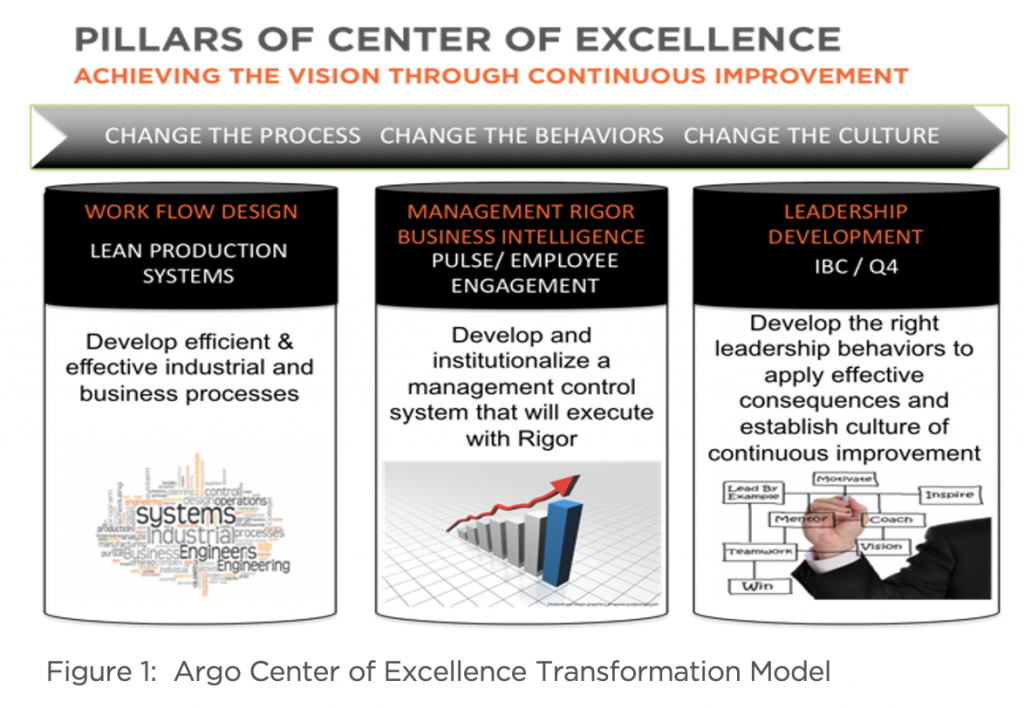
Results: Improvements began immediately upon execution of the first daily “pulse” meeting. The pulse meeting immediately allowed for tactical countermeasures and long-term problem resolution. Measuring, understanding and acknowledging the issues were key to realizing the improvement potential. Refinery managers were coached on how to use the data provided to challenge the vendor’s performance to optimize the rail operations performance.
While it is beneficial to conduct these daily meetings face to face, quite often it is just not realistic due to the operational environment. The ability to transition “white board” performance management measurement system into digital format is key. Critical stakeholders are often physically spread out throughout the refinery, and now the recent challenges with health crisis; digitization becomes essential.
A wide variety of digitization tools exist today, ARGO-EFESO has deployed multiple systems dependent on the client capabilities or needs. In one example, Power BITM dashboards were deployed which enabled the logistics team to measure daily performance to KPIs electronically. Digitization of all the data inputs allowed all stakeholders to share the same critical information and to make timely decisions about car management, load rack availability and switching effectiveness.
In another example, ARGO-EFESO used Power AppsTM to create a mobile reporting tool to streamline the data entry for rail car information and loading times. This tool significantly simplified the activities of the vendor TrainMaster on site and enabled real-time information integration among the refinery (billing), the switching vendor, on-site tenants and HQ business areas.
Regardless of the digitization tool used, the benefits are significant – ease of use, streamlined data entry, data accuracy, data capture, and analysis potential.
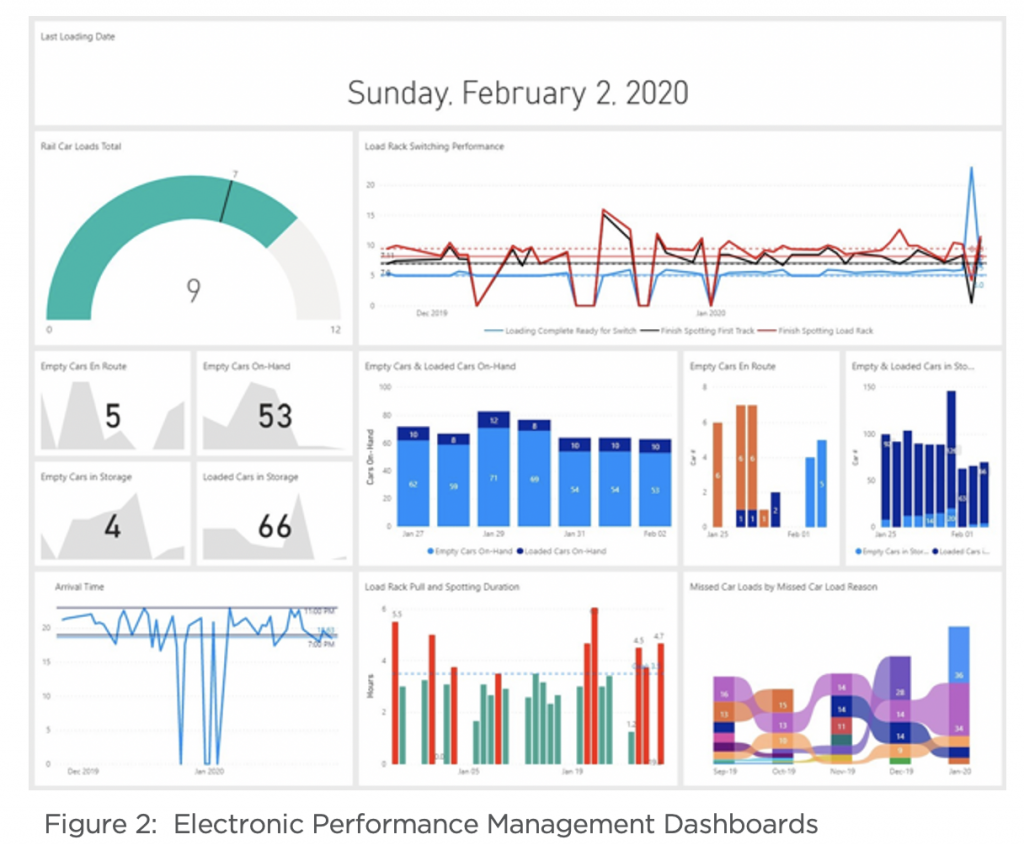
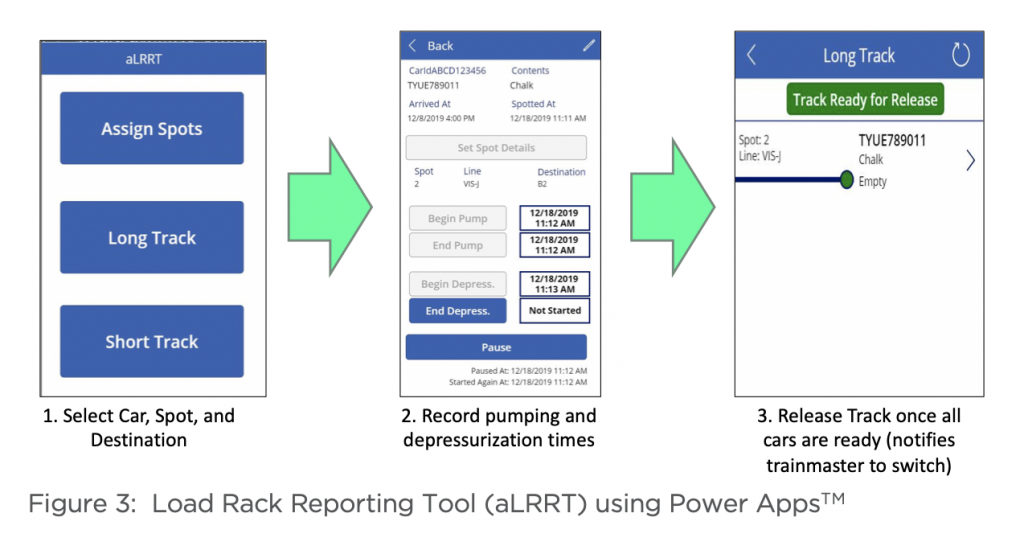
Standard yard operating system for rail operations
The Challenge: ARGO-EFESO railroad professionals worked closely with the switching vendors and observed that no standard yard operating procedures existed. While the vendors understood and generally were effective in executing rail car handling procedures, the yard management process was reactive. No standards established, no expectations, no terminal clock established, congestion, double handling, crew frustration and inefficient operations were prevalent. Rail switching and load rack spotting operations were not aligned with refinery demand levels. These were taking much longer than would be expected for the volume and yard layouts. The excuses for non-performance were generally accepted as being “out of our control.”
Actions: Designed and implemented standard work using lean concepts of flow and pull to create clear rail car work flows. ARGO-EFESO coached the vendors to design and implement a standard yard operating plan based on meeting the needs of the refinery which included measures to ensure the switching vendor and the class one rail provider performed as required to meet refinery demand. ARGO-EFESO worked with the vendors to design smart classification systems based on refinery demands, not necessarily what made the switching operations easy.
Results: The application of smart yard management techniques resulted in the reduction of congestion; one yard consistently exceeded max fluidity capacity which occurs when inventory reaches over 80% of physical capacity. Improvements resulted in reductions in yard inventory by 30% in just three weeks. The reductions created fluidity increasing productivity by eliminating congestion and minimizing the handling of rail cars.
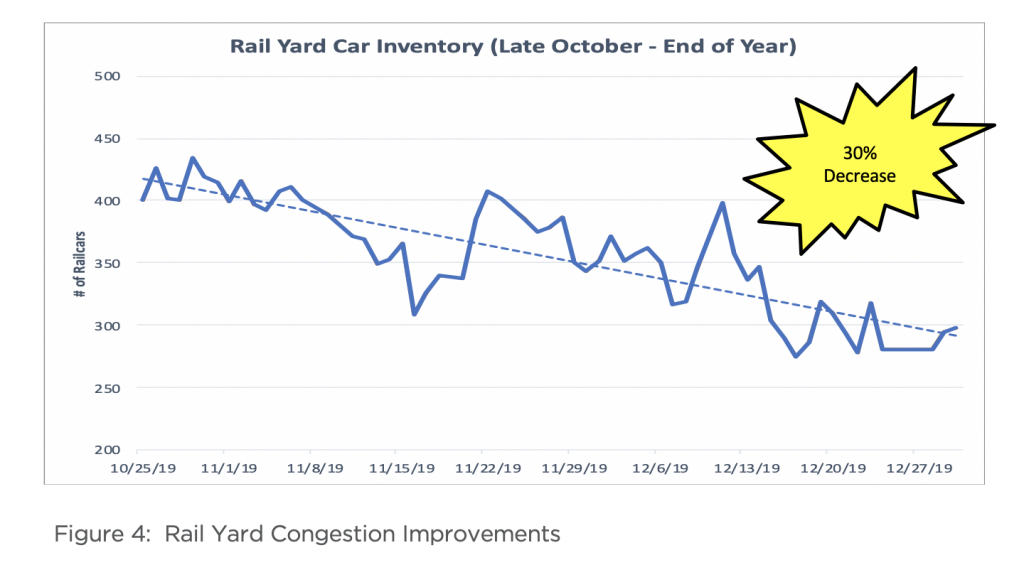
Newly designed yard operating plans drove efficiency onto the daily switching operations moving from a highly variable, unpredictable system to consistent repeatable performance, meeting established timelines to maximize operational performance. These designs included classification systems and new spotting techniques reducing car handling and switching times by 21%.Sustainment and Continuous Improvements
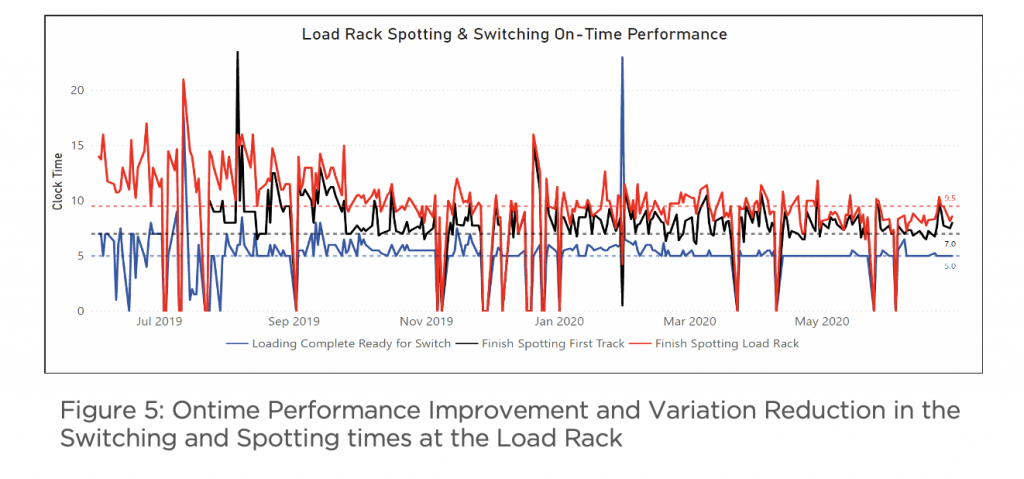
Standard operating systems for load rack operations
The Challenge: As with yard operations, the load rack operations were operating as independent entities with no standard operating procedures for the process of loading and unloading railcars. ARGO-EFESO discovered 24/7 operations with 30-50% of the time not executing loading or unloading operations. The refinery team felt the load racks were at maximum capacity and could not produce more. ARGO-EFESO quickly assessed that opportunity existed to nearly double capacity.
Actions: ARGO-EFESO implemented “pull” systems at the load rack to maximize the needed product at the load rack and thereby allow the refinery to pull the amount of product to optimize the refining process. This eliminated the control of load rack performance from the rail switching vendor and shifted control to the refinery operations. The switching vendor was given a standard loadout of rail cars and product to spot at the rack. Establishing this daily routine allowed the switching vendor to prepare and be more effective pacing the right cars at the right time to meet refinery demand.
Results: In the first three months, offloading capacity at one refinery increased by over 30% resulting in $4.8 million in addition margin. The refinery surpassed previous records for two months and were on pace for third consecutive months until planned unit shutdown reduced demand. The first three months throughput exceeded previous record for entire year.

Sustainment and Continuous Improvements
The Challenge: Limited records of rail and load rack operations performance inhibited the refineries ability to quantify the impact of all the issues contributing to the missed throughput capacity and the daily variability.
Actions: Determined and measured Key Performance Indicators to document the defects that contribute to lost production. Analyze the impacts to establish relevance and prioritization to allow decision makers to pursue improvements. Incorporated and trained employees on problem solving techniques and the PDCA cycle and coach the skills required to conduct Rapid Improvement events.
Results: Multiple rapid improvement events have been executed to date to identify root causes and develop solutions to some of the main barriers to increasing capacity of the rail system.
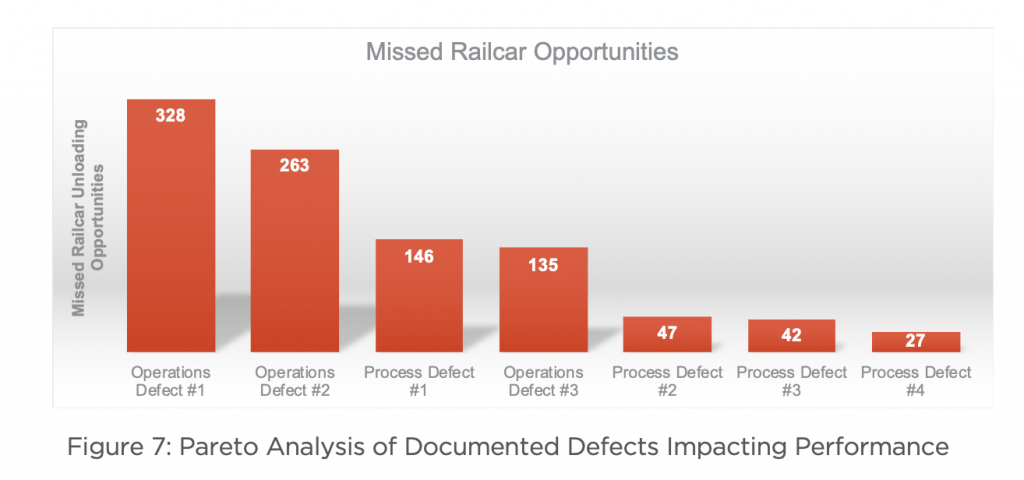
Employing additional digitization tools, ARGO-EFESO can assist clients with visual and virtual management and execution of the improvement ideas generated by the team. iObeyaTM is the tool of choice for the current refinery continuous improvement efforts.
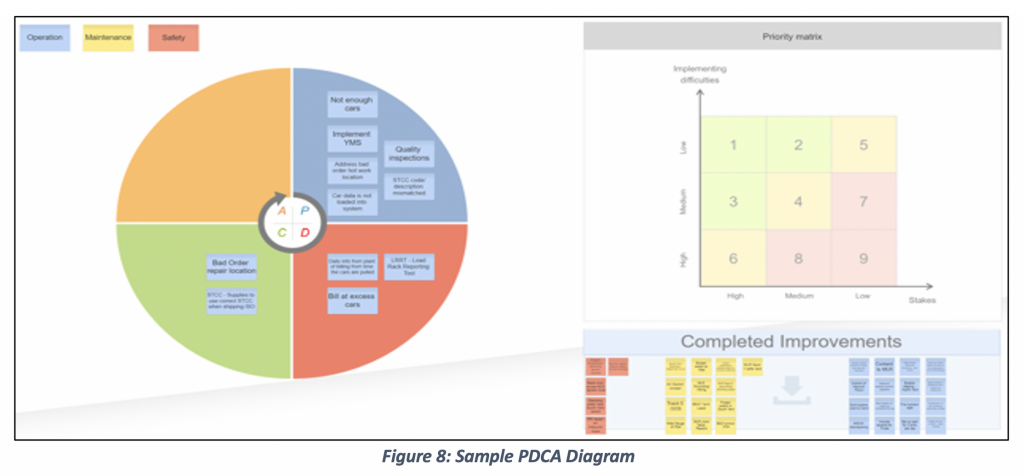
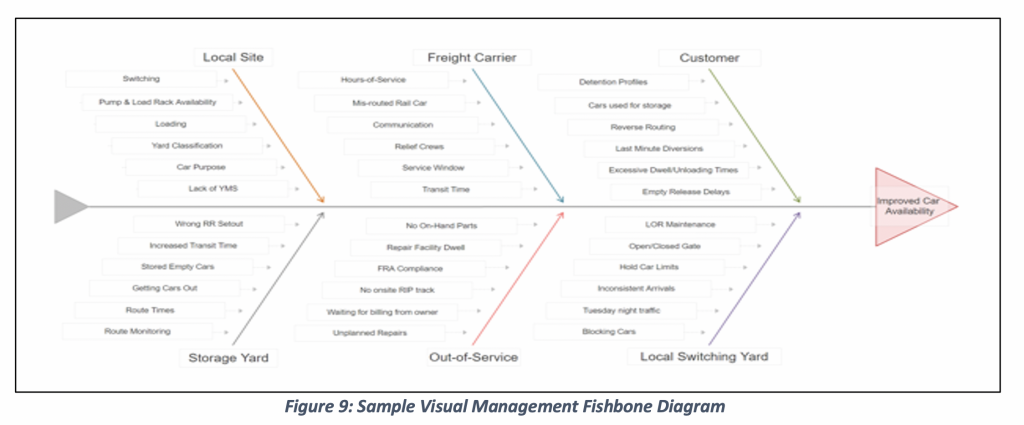
Summary
As this case study demonstrates, Rail Logistics Optimization has a direct and immediate impact on refinery operations and the bottom line. The proper application of rail expertise along with lean principles and continuous improvement methods can drive significant performance improvements in downstream operations and any industry wanting to capitalize on the efficiency of rail transportation. By providing a framework for observing processes, gathering information, and analyzing that data, ARGO-EFESO offers a mechanism for not only identifying the inefficiencies and pain points but also for designing and acting on the improvements necessary to address them.
About the Author:
Jorge Mastellari, Senior VP, leads ARGO-EFESO’s Oil and Gas practice. His international projects focus on EBITDA and cash flow improvements, product portfolio and profitability analysis, and the design and delivery of strategy deployment programs. [email protected]